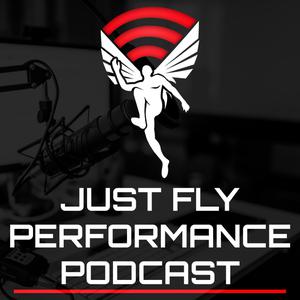437: Cody Bidlow on Breaking Sprint Barriers and Intuitive Training Concepts
Today’s podcast features speed coach, Cody Bidlow. Cody is a track sprints coach, athlete, and founder of Athlete X and SprintingWorkouts.com. He has been a head track & field coach at Arcadia High School in Phoenix, AZ, and a coach at EliteU working with NFL combine prep athletes. An all-conference sprinter for Grand Canyon University, Cody has been a personal coach for professional MLB athletes, track athletes, and consults for coaches around the world.
To sprint fast takes an immense amount of effort and focus. To sprint one’s fastest in their early 30s takes a deep understanding of the training process and individual factors that account for top performance.
On today’s episode, Cody speaks on speed training in regards to his current sprinting personal bests at age 32, and how he has dialed his training in this recent year. We speak on many aspects of training on the level of intensity, essentialism, workout regulation, resisted sprinting, complex training, and much more.
Today’s episode is brought to you by TeamBuildr’s Gym Studio and Athletic Development Games.
Use the code “justfly25” for 25% off any Lila Exogen wearable resistance training, including the popular Exogen Calf Sleeves. For this offer, head to: Lilateam.com
TeamBuildr is an online software for coaches and trainers. Use the code “JUSTFLY” for a free 30-day trial of the TeamBuildr software. For a Gym Studio 14-day free trial, head to gymstudio.com
View more podcast episodes at the podcast homepage.
Main Points
2:37- Cody’s Recent Training Gains, Along with His New Role as a Father
10:00- Using Strategic Breaks for Enhanced Performance
12:33- High-Intensity Athlete Training for Performance Improvement
19:05- Natural Approach to Sprinting Techniques
23:13- Optimizing Training Intensity on a Busy Schedule
29:53- Maximizing Intensity for Effective Workouts
32:41- Performance Optimization through Autoregulation in Training
41:18- Enhancing Performance Through Auto-Regulation Communication
55:11- Enhancing Sprint Performance Through Resisted Load Variation
1:00:29- Concurrent and Complex Training Paradigms for Sprinting Success
1:05:14- Optimal Training Methods for Narrow vs. Wide ISA Types
Quotes
(26:34) I'd rather walk away from the session knowing that I ended on my best note. I can, you know, ride the dopamine high of seeing that, you know, nice time and having a fun time out at the track and let that be the stimulus for the day rather than, oh, well, the book over here says that I need to do, you know, 350 meters and I only did 240. - Cody Bidlow
(34:10) I would say that my training is very autoregulated, but it's not to the point where I'm looking at, oh, velocity dropped by 2.5%, so that's why I'm going to shut it down, It's more, I can tell within myself that I'm getting to a point where I'm starting to get fatigued from this workout – Cody Bidlow
(38:24) Are you really going to run faster on this next one? Yes. Okay, do it. Are you going to be safe? Are you or are you going to get hurt? No, I'm not going to get hurt. Okay. Yeah, do it. - Cody Bidlow
(44:43) If you just simply ask them, like, how do you feel? They're gonna say good. Bad. You know, they're just gonna say some kind of basic thing because they may not really grasp what I mean by that question. - Cody Bidlow
(45:03) So I would try to ask questions in a way where we're getting a little bit deeper. Like, I'd maybe be specific about how do your hamstrings feel? Do you feel like you're going to be able to run as well on the next one? Or what did you feel on that rep? - Cody Bidlow
(46:32) The athletes who really want to be good, they're always going to say, yes, I'll always take another rep. The athletes who are lazier, they don't care as much, or, you know, whatever their mental mechanism is, they always. It's almost like, yeah, I'm good. Yeah, I'm done. It's not even necessarily that I want to get better.
14 November 2024, 1:21 pm
